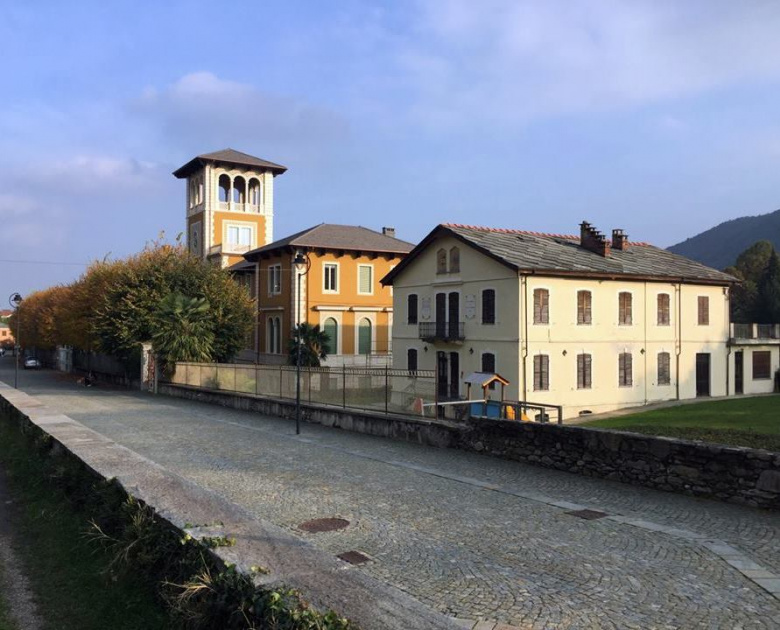Maretsch Castle in Bolzano (Alto Adige) is situated near the city centre and surrounded by vineyards.As well as being home to an important cycle of Renaissance frescoes, Maretsch Castle also bears witness to the spread of Protestantism in Tyrol in the second half of the 16th century.
As well as being home to an important cycle of Renaissance frescoes, Maretsch Castle also bears witness to the spread of Protestantism in Tyrol in the second half of the 16th century. Evidence of the rapidly emerging new doctrine dates back to the erstwhile owners of the castle, the Römer brothers. Lukas Römer, commander of the Teutonic Order, Captain of the Adige and imperial commissioner for Maximilian II, commissioned the Gallery of Philosophers, located on the first floor. Here, alongside ancient Greek philosophers and sages, you can find a depiction of a mysterious figure going by the name Peter Spetsker. Recent research has identified Spetsker as the famous humanist and reformer Pietro Speziale da Cittadella (1478-1554). (The name Peter Spetsker is the direct translation from the Italian Pietro Speziale, meaning Peter Apothecary.) Due to his close association with the Protestant Reformation, Speziale da Cittadella was arrested by the Holy Inquisition in 1543 and imprisoned for eight years. During this considerable imprisonment he gained many supporters, including Martin Luther, who saw in him a martyr of the Protestant Faith. In the Gallery of Philosophers we can also view coats of arms which identify certain nobles who, as close associates of the Römer brothers, were, more or less openly, supporters of the same Lutheran ideas. It is therefore very likely that this room was decorated specifically for a close circle of individuals who shared the new Reformation ideals. And the traces of Protestantism do not stop here: in the castle chapel, instead of depictions of saints or the Virgin Mary, we find images of the four evangelists and scenes from the Passion of Christ.
The Reformation in Tyrol
Alto Adige is situated between Trentino to the south and Austrian Tyrol to the north. It is a land of rich contrasts where classic Mediterranean panoramas meet the majestic alpine landscape of the Dolomites. Bolzano lies at 262m above sea level and is the provincial capital with a population of about 100 000 inhabitants.
In the Tyrolean area, the Protestant Reformation spread quickly thanks to established communication and trade routes over the Brenner Pass and along the Inn and Adige rivers, which connected north-eastern Italy with the Danube region. Various sources bear witness to merchants transporting prohibited protestant books.
The first two decades of the 16th century saw a steady growth in the spread of heterodox ideas among merchants, soldiers and miners. The Anabaptists played a significant role in this diffusion of new ideas.
In 1525, the peasants' war spread to the southern Alps and into Tyrol. The local leader was Michael Gaismair, who was arrested in Innsbruck, viciously persecuted, and finally murdered in Padova. This did not prevent the spread of Protestantism, however, and the late 1520s saw Lutheran preachers Carlostadio and Jakob Hutter spreading the new faith in Chiusa and Val Pusteria respectively.
It was not uncommon to find Lutheran parish priests and psalms sung in German rather than Latin, and Protestant doctrine was frequently taught in schools. There were also several Lutheran secret societies. As a result, Ferdinand II, the son of the Holy Roman Emperor, who in 1567 became Archduke of Tyrol, became alarmed and sought to reform the clergy by putting into practice measures decreed by the Council of Trent in the name of the Counter-Reformation. However, close surveillance and numerous mandates did not solve the problem and Ferdinand eventually abandoned his policy of prohibition in favour of tolerance and moderation. Tyrol therefore did not revert entirely to Catholicism and even after the second half of the 1500s there were many who adhered to the Lutheran faith.
Maretsch Castle is mainly a meeting and congress centre, with meeting rooms which can be hired for conferences, exhibitions, weddings and more.
Anyway do not miss a visit of the castel, it's worth and it is just a few minutes walking distance from the city center. During the 16th century the castle was enlarged. Today you can see the rooms with the frescoes and you can enjoy the panoramic view from the tower.
At this point, external content (map/ OpenStreetMap) is displayed if you allow it: Privatsphäre-Einstellungen
Related members:
Additional touristic information
Information
Guided tours for groups are available with prior booking.
Castle Maretsch (visiting hours)
9am-12.45 pm (last entrance 12) and 2-5 pm (last entrance 4.15)
Castle Maretsch (office hours)
Monday - Friday
9-12 am and 2-5 pm
For information and bookings:
Tel +39 0471 976615
maretsch@maretsch.info
www.maretsch.info
All sights in this country
-
Chanforan Monument →
Angrogna / Italy

-
Protestant Cultural Centre →
Bergamo / Italy

-
Waldensian Library →
Torre Pellice / Italy

-
Waldensian Museum →
Torre Pellice / Italy

-
Waldensian Museum →
Guardia Piemontese / Italy

-
Waldensian Museum →
Massello / Italy
-
Waldensian Temple →
Torino / Italy

-
Waldensian Temple →
Bergamo / Italy

-
Waldensian Temple →
Pinerolo / Italy



